What Are the Advantages of SR22 for Reckless Driving?
If you've faced reckless driving charges, understanding the advantages of SR22 can be essential. This certificate not only helps you reinstate your suspended license but also proves your financial responsibility to authorities and insurers. By filing for SR22, you can regain your driving privileges and start improving your record over time. But there's more to reflect on about how SR22 impacts your insurance and future driving opportunities. What else could it mean for you?
If you've faced a reckless driving charge, obtaining an SR22 can be an important step toward regaining your driving privileges. An SR22 is a document that proves you have the minimum required insurance coverage, ensuring your compliance with state laws. This document not only helps you meet legal requirements but also facilitates the reinstatement of your suspended or revoked driver's license. By securing an SR22, you demonstrate to the state and your insurance provider that you're taking responsibility for your actions, which is essential for moving forward.
One of the primary advantages of obtaining an SR22 is its role in showcasing your financial responsibility. When you hold a valid insurance policy, you're prepared to cover potential damages resulting from accidents. This is especially important for individuals classified as high-risk drivers due to reckless driving incidents. With an SR22 in place, you not only comply with the law but also increase your chances of obtaining insurance coverage, which may have seemed limited after your conviction. Additionally, this certificate serves as a mandatory requirement for compliance with insurance regulations, reinforcing your commitment to responsible driving. Moreover, having an SR22 can help you demonstrate compliance with state laws, which is crucial for your driving record.
Obtaining an SR22 showcases your financial responsibility, helping high-risk drivers secure necessary insurance coverage after a reckless driving incident.
Furthermore, having an SR22 can considerably reduce driving restrictions. Once you file for the SR22, you regain the ability to drive legally, allowing you to commute to work or handle personal errands without the fear of further legal repercussions. This reinstatement process streamlines your path back to normalcy, enabling you to maintain the mobility crucial for your daily life.
For high-risk drivers, the benefits of an SR22 extend beyond just legal compliance. It can offer financial protection against accidents, which is invaluable. By maintaining continuous insurance coverage, you also have the opportunity to improve your driving record over time. This proactive approach can enhance your credibility with both insurance providers and state authorities, demonstrating your commitment to responsible behavior.
When considering economic factors, while SR22 insurance may come with higher premiums due to your classification as a high-risk driver, the long-term financial benefits often outweigh these costs. The filing fees for SR22 certificates are relatively low, typically ranging from $25 to $50. By avoiding the financial burdens of uninsured accidents, you can secure your financial stability in the long run.
It's important to recognize that compliance with state laws isn't just a formality; it's a crucial aspect of maintaining a valid driver's license after a reckless driving charge. Your insurance provider will notify the DMV of your SR22 coverage, ensuring that you're meeting state requirements. This verification process reduces the risk of encountering further legal issues related to your driving status.
Conclusion
To sum up, obtaining an SR22 for reckless driving can be a game-changer for you. It's like having a lifeline that helps you navigate through the stormy seas of a suspended license. By proving your financial responsibility, you not only regain your driving privileges but also start mending your driving record over time. Embracing this opportunity can greatly improve your standing with insurers, making it easier to steer clear of high-risk classifications in the future.

